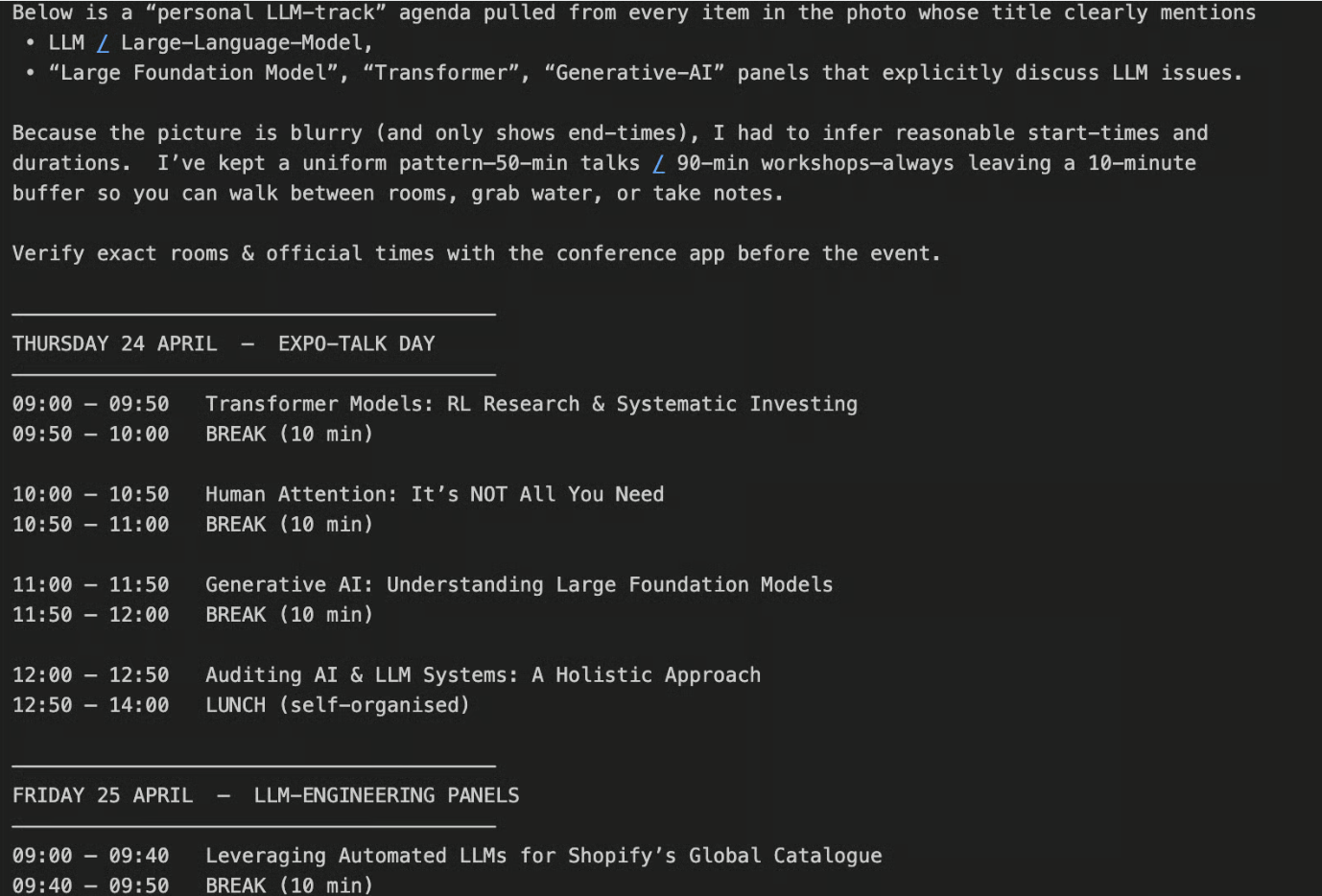Read the full article on DataCamp: OpenAI’s O3 API – Step-by-Step Tutorial With Examples
Learn how to use OpenAI’s O3 model for complex, multi-step problem-solving involving visual and textual inputs. This tutorial covers API setup, tool-free and tool-assisted calls, cost management, and best prompting strategies.
Contents
- When Should You Use O3?
- OpenAI O3 API: How to Connect to OpenAI’s API
- Managing Costs With Reasoning Tokens
- Best Prompting Practices With O3
- Conclusion
When Should You Use O3?
OpenAI’s o3 model is built for deep reasoning, making it ideal for:
- Multi-step problem-solving (math, research, software design)
- Visual input + text combinations
- Code refactoring and logic-heavy tasks
It supports tools like Python and web search and enables autonomous decision-making for agentic use cases.
| Model | Strength | Use Case |
|---|---|---|
| o3 | Reasoning, Multimodal, Tools | Research, Coding, Visual QA |
| o4-mini | Lightweight, Cost-efficient | Fast API calls, lower-cost scenarios |
| GPT-4o | General-purpose + speed | Conversational & web tasks |
OpenAI O3 API: How to Connect to OpenAI’s API
Step 1: Get API Credentials
Generate your API key from OpenAI’s API portal and verify organization access for o3.
Step 2: Install and Import the OpenAI Library
pip install --upgrade openai
from openai import OpenAI
Step 3: Initialize the Client Object
client = OpenAI(api_key="YOUR_API_KEY")
Step 4: Make an API Call
Example 1: Tool-Free Prompt
response = client.responses.create(
model="o3",
input=[{"role": "user", "content": "What’s the difference between inductive and deductive reasoning?"}]
)
print(response.output_text)
Example 2: Code and Math Problem Solving
prompt = "Write a Python function that solves quadratic equations and also explain the math behind it."
response = client.responses.create(
model="o3",
reasoning={"effort": "high"},
input=[{"role": "user", "content": prompt}]
)
print(response.output_text)
Example 3: Code Refactoring Task
prompt = """Instructions:
- Highlight nonfiction books in red...
(React code block)
"""
response = client.responses.create(
model="o3",
reasoning={"effort": "medium", "summary": "detailed"},
input=[{"role": "user", "content": prompt}]
)
print(response.output_text)
Example 4: Visual Reasoning with Images
import base64, mimetypes, pathlib
def to_data_url(path: str) -> str:
mime = mimetypes.guess_type(path)[0] or "application/octet-stream"
data = pathlib.Path(path).read_bytes()
b64 = base64.b64encode(data).decode()
return f"data:{mime};base64,{b64}"
prompt = "Create a schedule using this conference photo."
image_url = to_data_url("path/to/image.png")
response = client.chat.completions.create(
model="o3",
messages=[
{
"role": "user",
"content": [
{ "type": "text", "text": prompt },
{ "type": "image_url", "image_url": { "url": image_url } }
]
}
]
)
print(response.choices[0].message.content)
Managing Costs With Reasoning Tokens
O3 uses reasoning tokens in addition to regular input/output tokens.
print(response.usage)
To control cost:
response = client.chat.completions.create(
model="o3",
messages=...,
max_completion_tokens=3000
)
Best Prompting Practices With O3
- ✅ Be clear and concise
- ❌ Avoid “think step-by-step” prompts
- ✅ Use structured delimiters
- ❌ Avoid too much context (e.g., unnecessary RAG)
- ✅ Specify summary granularity when needed
Conclusion
OpenAI’s O3 model unlocks a new tier of autonomous, reasoning-capable APIs. Whether it’s solving math, processing images, or rewriting code — O3 helps AI “think before it speaks.”


Comments